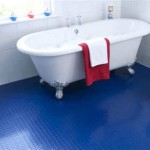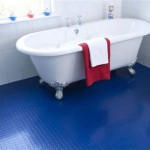Oak Plank Flooring Cost: A Comprehensive Guide
Oak plank flooring remains a consistently popular choice for homeowners and businesses seeking a durable, beautiful, and timeless flooring solution. Its natural beauty, coupled with its robust character, makes it a sought-after material. However, understanding the cost involved in acquiring and installing oak plank flooring is crucial for effective budgeting and project planning. This article provides a detailed overview of the various factors that contribute to the overall cost of oak plank flooring projects.
The total expenditure for oak plank flooring is not simply the price per square foot of the material itself. Instead, several elements synergistically influence the final investment. These elements span from the quality and type of oak to the intricacies of the installation process. This detailed analysis aims to equip readers with the knowledge needed to navigate these considerations and make informed decisions about their flooring projects.
Key Cost Factors: Type of Oak and Grading
The species and grade of oak play a significant role in determining the flooring cost. Oak is typically categorized into two main groups: red oak and white oak. Understanding the differences in their properties and aesthetic appeal is essential for selecting the appropriate type for specific needs and budgets.
Red oak is a more common and, generally, a more affordable option. It is characterized by its pinkish-red hue and open grain pattern. This makes it suitable for staining and achieving a wide range of color finishes. Red oak is generally softer than white oak, placing it at a 1290 rating on the Janka hardness scale. This relative softness can make it more susceptible to dents and scratches, particularly in high-traffic areas, though it remains a durable option for most residential applications. Due to the abundance of red oak, it tends to be less expensive than white oak. The cost savings can be significant, especially for large flooring areas.
White oak, on the other hand, boasts a tighter grain pattern and a more subtle, neutral color palette. Its color ranges from light beige to brown. It is also significantly denser than red oak, scoring 1360 on the Janka hardness scale. This makes it more resistant to wear and tear, making it a preferred choice for areas with heavy foot traffic or where durability is paramount. The tighter grain also makes it more water-resistant, useful for kitchens and bathrooms. Given its superior durability and aesthetic appeal, white oak typically commands a higher price point than red oak. The increased cost reflects its superior quality and enhanced performance in demanding environments.
Grading of the oak planks also affects the cost. Grading refers to the appearance and consistency of the wood. Higher grades usually reveal fewer knots, color variations, and other natural imperfections. Flooring is typically graded as select, common 1, common 2, and rustic, with select being the highest grade with the most uniform appearance and fewest blemishes. Each descending grade will show more natural variation and imperfections, leading to a lower price point. The grading selection often depends on the desired aesthetic. Some individuals prefer the character and unique features of lower grades, whereas others prioritize the uniformity and clean look of higher grades.
The type and grade of the oak should align with the anticipated use and aesthetic preferences. Carefully weighing the pros and cons of each option will ensure that the final selection matches both budget and functional requirements.
Installation Costs and Preparation
Beyond the cost of the oak plank flooring itself, the installation process contributes significantly to the overall expense. Installation costs encompass a range of factors, including subfloor preparation, labor charges, and additional materials necessary for a successful installation.
Subfloor preparation is a crucial step that often gets overlooked but greatly affects the lifespan and performance of the new flooring. The subfloor must be level, clean, and dry before installation can commence. Any existing issues, such as cracks, unevenness, or moisture problems, must be addressed to prevent future problems like warping, squeaking, or mold growth. Depending on the condition of the existing subfloor, preparation may involve patching, leveling with self-leveling compounds, or even replacing sections of the subfloor. Failing to properly prepare the subfloor can lead to costly repairs down the line, making it a worthwhile investment to address any issues upfront.
Labor costs constitute a substantial portion of the installation expense. Professional installers typically charge either by the square foot or by the hour. Hourly rates can vary based on experience, location, and the complexity of the installation. More intricate patterns, such as herringbone or chevron, will demand more time and skill, resulting in higher labor costs. The experience and expertise of the installer are also paramount. Hiring a qualified professional ensures that the flooring is installed correctly, minimizing the risk of errors and ensuring a long-lasting, aesthetically pleasing result. While DIY installation may appear to save money initially, potential mistakes can lead to higher costs to rectify the issue.
Additional materials needed for installation encompass underlayment, adhesives, nails or staples, and finishing products. Underlayment provides a moisture barrier, reduces noise transmission, and adds cushioning underfoot. The type of underlayment selected will depend on the subfloor and the specific requirements of the flooring. Adhesives are used to secure the planks to the subfloor, ensuring a stable and permanent bond. The type of adhesive used will vary depending on the type of flooring (solid or engineered oak). Nails or staples are another option for securing planks, particularly for solid wood flooring. Finishing products, such as sealers and stains, can enhance the appearance of the flooring and provide protection against wear and tear. These materials add to the overall cost but are crucial for a successful and durable installation. Skipping these necessary materials may reduce the initial cost but may result in lower quality and higher costs in the long run.
Additional Cost Considerations
Beyond the cost of the flooring material and installation, several other factors can influence the total project expense. These include removal and disposal of existing flooring, furniture moving, trim and molding installations, and potential repairs. These often-overlooked elements can significantly impact the total budget and should be factored into to avoid unforeseen expenditures.
Removing and disposing of existing flooring can add to the overall job cost. Depending on the type of material and the ease of removal, disposal fees may also apply. Carpeting, tile, and vinyl flooring all require distinct removal methods, each accompanied by its own set of challenges and labor requirements. Some materials may require specialized tools or equipment, further increasing the cost. It is essential to obtain accurate quotes for removal and disposal to accurately assess the total project cost.
Moving furniture out of the area before installation is imperative to ensure a smooth and efficient workflow. If you are unable to remove furniture yourself, it can be necessary to hire movers, which further increases the cost. Depending on the volume and weight of the furniture, moving costs can vary substantially. It is important to plan ahead and arrange for furniture moving well in advance of the installation date to avoid delays and unexpected expenses. Consider the potential need for storage if the furniture cannot be immediately relocated to another area of the home.
Trim and molding installations are necessary to complete the flooring project and provide a finished look. Skirting boards, baseboards, and quarter-round molding are used to cover the edges of the flooring and conceal any gaps between the floor and the walls. The cost of trim and molding will depend on the style, material, and quantity needed. Installation costs can vary based on the complexity of the design. While trim and molding might seem like a minor detail, they significantly contribute to the overall aesthetic appeal of the flooring and should be factored into the budget.
Unexpected repairs may arise during the installation process, particularly in older homes. Discovering hidden problems, such as damaged subflooring, termite infestations, or plumbing leaks, can necessitate additional repairs and delays. The cost of these repairs can vary widely depending on the extent of the damage. It is prudent to set aside a contingency fund to cover any unexpected repairs or issues that may arise during the installation process. This contingency fund will help to mitigate the financial impact of unforeseen problems and ensure that the project stays on track.
In conclusion, the cost of oak plank flooring is determined by a combination of factors, including the type and grade of oak, installation costs, and preparation expenses, as well as additional expenditures like furniture relocation and unexpected repairs. A detailed assessment of these elements is imperative for creating a realistic budget and ensuring a smooth and successful flooring project. By carefully considering all the cost factors involved, homeowners and businesses can make informed decisions that align with their budgetary constraints and aesthetic aspirations.

Average Hardwood Flooring S In 2024 Forbes Home

Cost Of Installing White Oak Flooring Three Trees

How Much Does It Cost To Install Hardwood Flooring Inc

Wood Flooring Guide 2024 How Much Does Wooden Cost

How Much Should Wooden Flooring Cost In 2024 Checkatrade
.png?strip=all)
The Cost Of Oak Hardwood Floors A Comprehensive Guide

Wood Flooring Guide 2024 How Much Does Wooden Cost

How Much Does Flooring Installation Cost In 2024 Forbes Home

The True Cost Of Wood Flooring Installation Materials And More

Lifeproof Fresh Oak 6 Mil X 8 7 In W 48 L Lock Waterproof Luxury Vinyl Plank Flooring 20 06 Sqft Case I96711l The Home Depot
Related Posts








